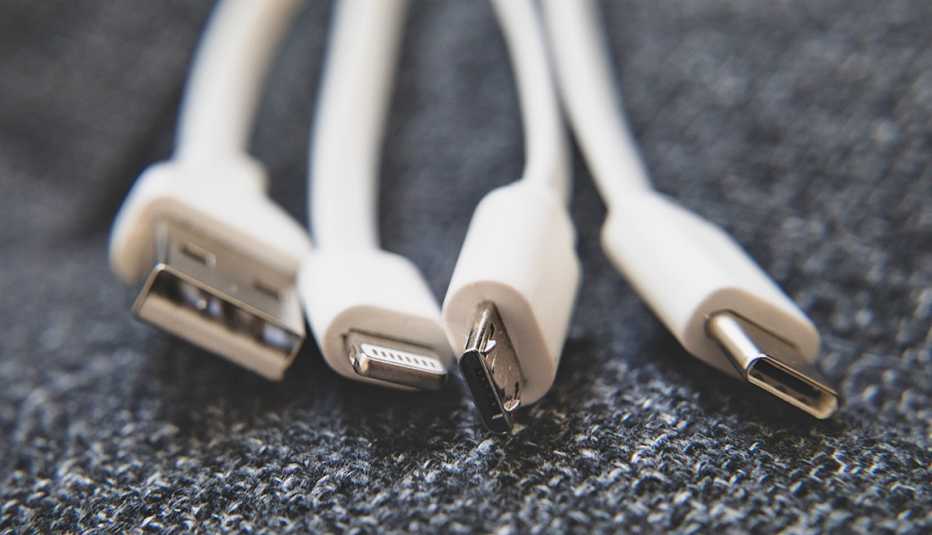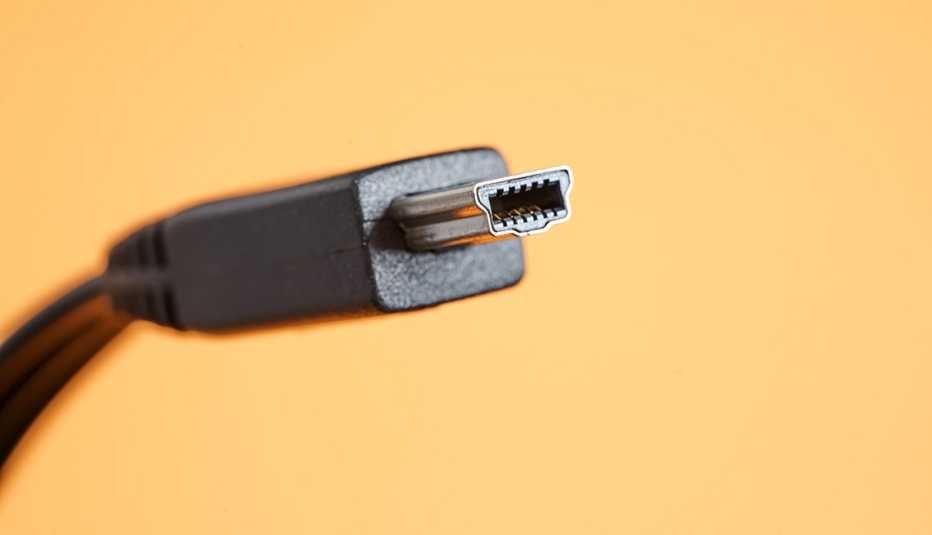Staying Fit


Here’s the untangled truth about the cables and cords you use to power up your devices: One end goes into the charger; the other plugs into your phone, computer or another device.
The European Union (EU) wants it to be that simple. And Apple on Sept. 12 in effect acknowledged that trying to fight the issue doesn’t make fiscal sense.


AARP Membership— $12 for your first year when you sign up for Automatic Renewal
Get instant access to members-only products and hundreds of discounts, a free second membership, and a subscription to AARP the Magazine.
You may not know a USB-C cable from Apple’s soon-to-be-retired Lightning connector. But you may be wondering whether all those old cords and adapters in your drawer will work with the latest tech gear. That’s especially worth asking because the power adapter, sometimes called a brick, that you plug into the wall is no longer automatically included with the latest phones.
The alphabet soup of USB and other connectors is enough to drive even tech-savvy users bonkers at times.
Connectors remain a mixed bag on Apple devices
Will your old cables and adapters work? The short answer is maybe. It depends on the device.
Lightning. For more than 10 years, Apple phones — starting with iPhone 5, released in 2012, up to the iPhone 14 models that debuted in 2022 — came equipped with Apple’s proprietary Lightning connector.


30-pin connectors. Before that, Apple used a 30-pin connector to attach a charging cable to its iPads, iPhones and iPods.
USB-C. But the newest phones from Apple — the 2023 iPhone 15, 15 Plus, 15 Pro and 15 Pro Max that the company unveiled — ditch Lightning for USB-C.
If you have an iPad, it may have a Lightning port. Then again, on some recent tablets, Apple abandoned Lightning for USB-C, meaning that one end of the cable goes into the USB-C port and the other into a USB-C power adapter, which is still supplied.
“It’s a big move for Apple and the industry, and it also brings us into a level of standardization across all kinds of products,” Chairman Tim Bajarin of Creative Strategies, a tech analysis firm in San Jose, California, said of iPhone 15s with USB-C.
The increasingly popular slim, oval-shaped USB Type-C connector is popping up on all kinds of devices. A USB-C opening is smaller than the familiar rectangular USB-A port that may be on your older power adapter, so the cord in the box won’t fit your old adapter.
USB-A is better known without the “A” suffix. It’s just USB or regular USB to the average person.
Android smartphones have equally confusing roots


This cord conundrum afflicts Androids as well.
Mini- and micro-USB. Many Android phones, even those just a few years old, have so-called mini-USB or micro-USB cables and ports. Both are smaller than a regular USB but are different from each other.
USB-C. The latest top-tier Android phones have mostly migrated to USB-C. But lower-cost handsets may not have made the switch, which should change as the cost of USB-C falls.




































































More From AARP
Find Out How to Use Free Apps to Save Money
Discover free applications available for your smartphone
How To Clone Your Own Voice Using Your Smartphone
iPhone has safeguards but voice mimicry has creepy sideWhat Cloud Storage Service Will Work Best for You?
The 5 most popular providers all have upsides